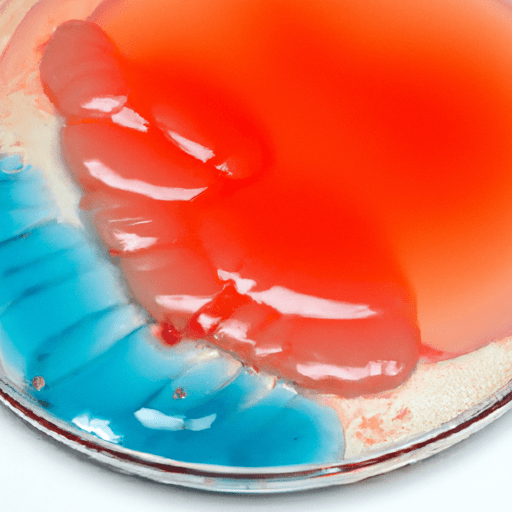Agar Agar: The Versatile Vegan Gelatin Alternative
If you’re looking for a plant-based alternative to gelatin, look no further than agar agar. This unique ingredient, derived from seaweed, has been prized for centuries for its gelling properties and wide range of culinary applications. In this post, we’ll explore the taste, common uses, nutritional value, and fascinating history of agar agar.
Taste and Texture
Agar agar has a neutral taste and odor, making it an excellent ingredient for a variety of culinary creations. When dissolved in liquid and set, it forms a firm, jelly-like texture that is smoother and more delicate than traditional gelatin-based desserts. Its unique texture makes it perfect for both sweet and savory dishes.
Common Uses in Cooking
The versatility of agar agar is truly remarkable. In sweet preparations, it can be used to create stunning and elegant desserts like panna cotta, custards, and fruit jellies. Its gelling properties also make it ideal for setting homemade jams, jellies, and pie fillings. For those with dietary restrictions, agar agar opens up a world of possibilities for creating vegan-friendly versions of beloved classics.
In savory dishes, agar agar can be used to make vegetable aspics, terrines, and even “caviar” spheres. Its ability to hold shape even at higher temperatures makes it a valuable tool in molecular gastronomy. Additionally, agar agar can act as a thickening agent in soups, sauces, and dressings, providing a smooth and velvety texture.
Nutritional Benefits
Apart from its culinary advantages, agar agar offers some impressive nutritional benefits as well. This seaweed derivative is low in calories, fat-free, and contains no sugar or carbohydrates. It is also a rich source of fiber, making it an excellent ingredient for those looking to improve digestion and achieve a healthier gut. Agar agar is also an abundant source of trace minerals such as iron, calcium, and potassium.
History and Fun Facts
Agar agar’s history dates back centuries to ancient China and Japan, where it has been used for its medicinal properties. It was introduced to the Western world in the 17th century and gained popularity as a culinary ingredient in the 19th century.
Interestingly, agar agar’s gelling properties were discovered accidentally. In the mid-17th century, a Japanese innkeeper left a pot of seaweed soup outdoors during a winter night. The next morning, the soup had gelled due to the cold temperatures. This serendipitous incident led to the discovery of agar agar’s ability to set liquids.
It’s worth noting that agar agar is highly regarded in Asian cuisines, where it is traditionally used in desserts such as the famous Japanese yokan and the Filipino delicacy called gulaman. In these cultures, agar agar holds cultural significance and is celebrated for its versatility in various traditional dishes.
Conclusion
Agar agar, the plant-based gelatin alternative, offers a world of culinary possibilities. Its neutral taste, ability to create unique textures, and numerous health benefits make it a versatile ingredient worth exploring. Whether you’re a vegan, a food enthusiast, or simply looking for a new way to elevate your dishes, agar agar is an ingredient you won’t want to miss out on. It’s time to bring some agar agar magic into your kitchen and let your culinary creativity flourish.
Agar agar is a gelatinous substance derived from seaweed. Here are some interesting facts about agar agar:
Origin: Agar agar is derived from several species of red algae, including Gelidium, Gracilaria, and Pterocladia. It has a long history of use in Asian cuisine, particularly in Japan and Southeast Asia.
Common Uses: Agar agar is primarily used as a vegetarian substitute for gelatin in recipes. It has a stronger gelling capacity than animal-based gelatin and can set liquids at room temperature. It is commonly used to make desserts, jellies, custards, and even vegan gummy candies.
Nutritional Benefits: Agar agar is low in calories, fat, and carbohydrates, making it a suitable ingredient for those on a low-calorie diet. It is also a good source of fiber and contains trace minerals such as calcium, iron, and potassium.
Gelling Properties: Agar agar has unique gelling properties that set it apart from other gelling agents. It forms a gel when combined with liquid, which remains stable even at higher temperatures. The gelled texture can range from soft and delicate to firm and jiggly, depending on the concentration used.
Thermoreversible Gel: Agar agar forms a gel when heated and solidifies again upon cooling. This thermoreversible property makes it an ideal ingredient for dishes that require a gel texture to hold its shape at room temperature or higher.
Historical Significance: Agar agar has been used in Asian cuisine for centuries and has recently gained popularity in the Western world as a vegetarian alternative to gelatin. In scientific and microbiological fields, agar agar is used as a growth medium for cultivating various microorganisms, making it an essential ingredient in laboratories and research.
Remember that while agar agar is generally safe for consumption, individuals with gastrointestinal disorders or difficulties swallowing should exercise caution. It is advisable to consult a medical professional if you have any concerns or specific health conditions.




Use the share button below if you liked it.
It makes me smile, when I see it.